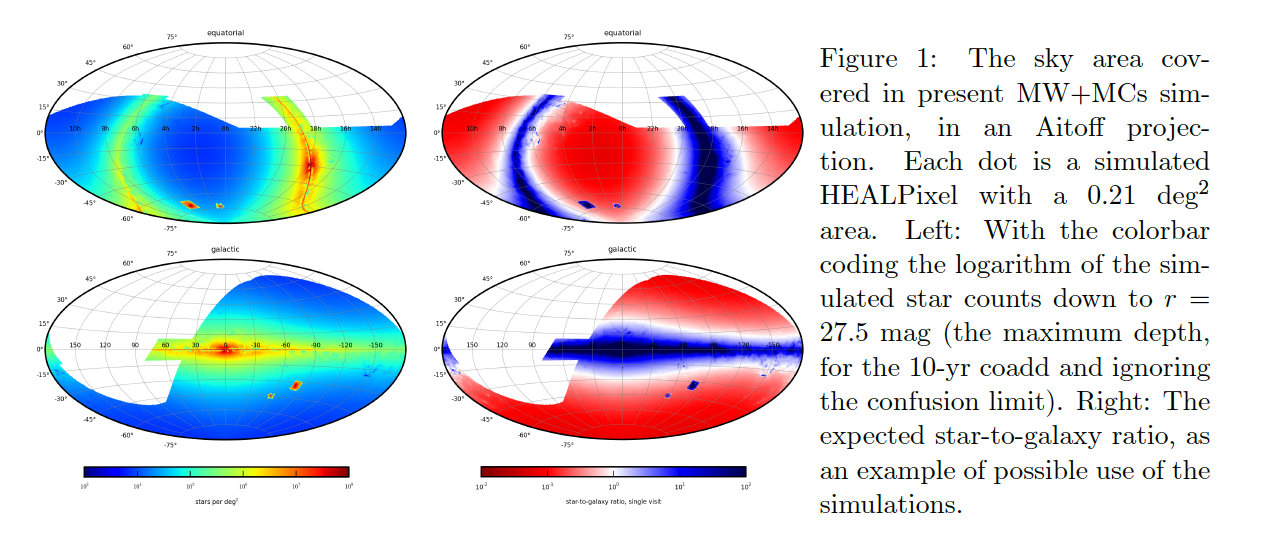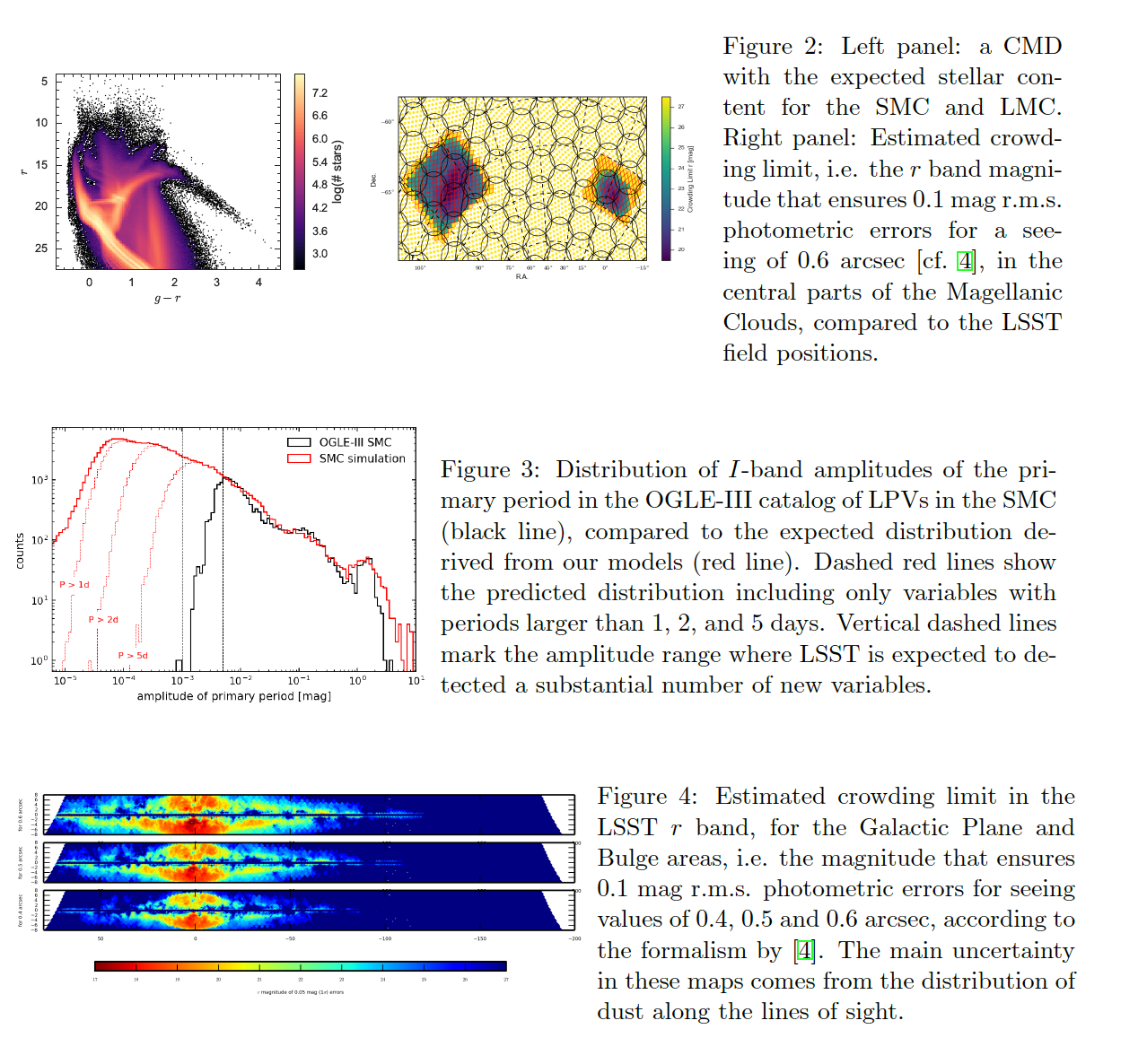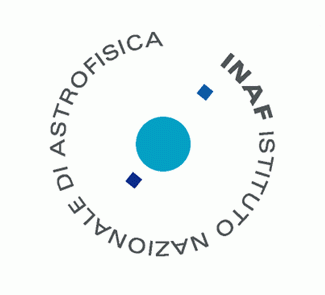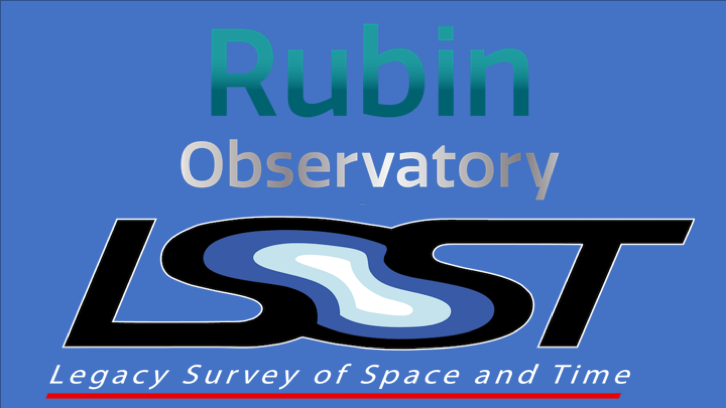Scientific Objectives
Simulations of the LSST stellar content The long-term goal of our project is to develop the stellar populations synthesis tools needed for the interpretation of LSST data. The initial goal is to provide improved simulations of the LSST stellar content, which would replace those previously computed with the GALFAST code by Mario Juric (see the LSST Science Book). The general content and format of the new simulations were discussed in a meeting at University of Washington (UW) in 2017, and then rened in a series of email exchanges and skype calls (mainly with Zeljko Ivezic and Mario Juric in Seattle, and Knut Olsen’s team at NOAO in Tucson) in the following year. A dedicated account for the simulations was set at the NCSA, in a virtual machine set by Mario Juric.
The first full simulations were run for a healpix resolution of nside = 128. They took about 3 weeks using 12 CPUs, plus twice as many weeks for checking and fixing all files. Figure 4 gives an overview of the covered sky area, in a stellar density plot. The complete MW simulation down to r < 27.5 mag, contains over 19 Gstars and take up 3.7 Tby of disk space. The latter refers to FITS files containing all quantities of interest: sky coordinates, stellar parameters (mass, luminosity, effective temperature, surface abundances), population parameters (initial metallicity and mass, age, distance, extinction, kinematics), and the LSST+Gaia photometry. With these information, it is also possible to derive the expected photometry in any other photometric system (e.g. for 2MASS, VISTA, WISE, etc.).

This initial simulation was ready by June 2018, and was being transferred to both UW and NOAO when a major system crash occurred. It interrupted the transfer for weeks and unfortunately corrupted a high fraction (1/4) of the output files. Given the instability of the system and the approach of the mini-surveys deadline, we decided not to recompute the missing area, but rather to produce some more basic numbers and maps that could be immediately useful for other people. The part of the simulation that was already transferred to NOAO, was recently made available as a NOAO Data Lab database.
Preparation for the next release. We are working on the preparation of the second version of this simulation. It is not yet clear where it will be computed (since the NCSA disks proved not to be reliable). Anyway now we know exactly the disk space required, and decided to limit future simulations down to a pre-computed crowding limit to keep the output files more manageable.
Our population synthesis software, TRILEGAL [2, 3], is being constantly improved, with ongoing work to include interacting binaries, light curves of eclipsing binaries, long period variability, and fast rotating stars. We are also extending the libraries of evolutionary tracks and stellar model atmospheres (with e.g. updated post-AGB evolution and alpha-enhanced models), and performing extensive tests with present large photometric surveys (VVV, VMC, DES, Gaia DR2, etc.).

Members
Principal Investigator:
Lèo Girardi, INAF-Osservatorio Astronomico di Padova
LSST young researchers:
Yang Chen INAF-Osservatorio Astronomico di Padova
Piero Dal Tio INAF-Osservatorio Astronomico di Padova/Università di Padova
Giada Pastorelli Università di Padova/INAF associate
Michele Trabucchi Università di Padova/INAF associate
Other INAF participants:
Simone Zaggia INAF-Osservatorio Astronomico di Padova
Yazan Momany INAF-Osservatorio Astronomico di Padova
Alessandro Bressan SISSA
Paola Marigo Università di Padova
Stefano Rubele Università di Padova
LSST Affiliation
Stars, Milky Way and Local Volume
Activity Report

